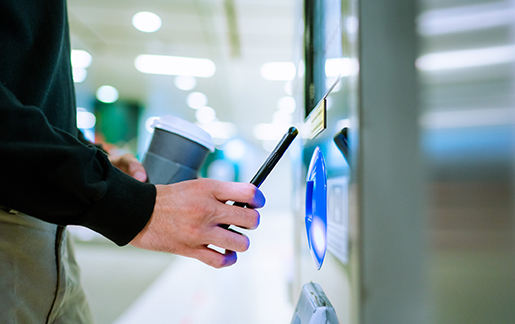Provide convenient access to secure your customers and protect their employees while driving down facility costs.
Provide convenient access to secure your customers and protect their employees while driving down facility costs.

Many people may think of smart badges as a handy way to give employees appropriate access to buildings, departments, and materials. But smart badges have evolved from simply allowing entrance to restricted areas to doing so much more. Today, implementations leveraging innovative internet of things technologies can help track employees’ locations within a campus or building, allowing the organization to change environmental settings based upon current usage and capacity (e.g.., shut off lights or lower the temperature in empty rooms)—and much more.
In this episode of From Promise to Profit, Khali Henderson, senior partner at BuzzTheory and vice chair of the CompTIA Emerging Technology Community, and Robert Forget, chief revenue officer at Credivera and co-chair of CompTIA’s IoT Advisory Council, discuss how IoT technology is revolutionizing smart badge functionality.
People think of smart badges as one-dimensional: Via a swipe or scan, they offer access to a location. Today’s smart badges are more versatile, including providing information that can make employees safer and more comfortable. In the past, badges were sometimes seen as a cumbersome inconvenience, as well as a security risk if lost or borrowed. However, now, IoT technology introduces far more connectivity options—including wearables—which makes authenticated access easier while also reducing the security risk.
Smart badging can help building managers make specific environmental changes as needed based on occupancy, according to Forget. For example, in the event of a fire, a building manager could activate an alarm state on the smart badges, causing a sound or flash to alert people in a facility they need to evacuate. In addition, while smart badges can provide access to locations, they can also be integrated into a smart watch or mobile device. They can also offer multi-factor authentication, which can range from the mundane (such as a PIN pad on the wall) to the advanced (such as an iris scan). To protect employee data on the badge, technologies such as blockchain are used.
“We’re using things like blockchain in order to do verified credentials for those employees,” Forget said. “You have individual identities stored in a digital format in a very secure fashion that can be leveraged for access control and for all sorts of different things when there’s an employee at a site.”
Smart badges can help businesses better serve their employees and secure their premises. They can help determine where people are, at what time and what access they have. Solution providers looking to implement smart badge technology, must not only see the opportunities in security and data collection but also understand the costs involved. Ensure you're choosing technologies that you know, have a long shelf life, and are relatively future proof. “That way,” Forget explained, “you don't have that capital expenditure that's going to turn people off …but you have the ability of layering on additional functionality and feature sets as they become available and as they become required.”
“You have individual identities stored in a digital format in a very secure fashion that can be leveraged for access control and for all sorts of different things when there’s an employee at a site.” – Robert Forget
No longer are badges laminated plastic on lanyards. Today, “badging” can mean identification and credentials on a smart watch, a mobile phone, or any smart device. They can be used in many different types of environments, from mining facilities with unique environmental concerns to hospitals to insurance offices. What customers want, Forget said, is “being able to have two-way communication to all of their employees, and making sure that they have the ability of letting somebody know [about] whatever's happening in their environment, [such as a] safety-related issue.”
In addition to the convenience factor of integrating badges within technology already in daily use, smart badging is more secure than old-school badges. “So, if you're thinking of an environment where only certain personnel are allowed into a certain area at a certain time,” Forget said, “all of those factors can come into play where we know the location, we know that they have access, we know that they have the appropriate credentials or certifications in order to do that work.”
Watch the How IoT is Improving Smart Badges for Business episode to learn more about:
Read more about Technology Solutions.